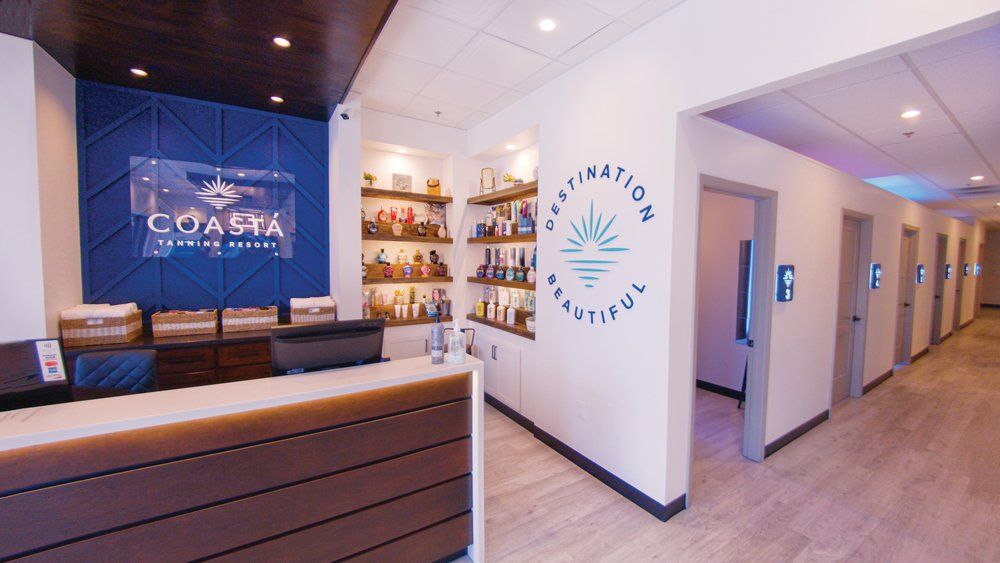Are Tanning Salons Profitable?
Are Tanning Salons Profitable?

Are Tanning Salons Profitable?
Tanning salons are consistently popular, making them a potentially profitable and long-lasting business venture. However, there are certain risks associated with opening any business, especially a tanning salon. A tanning salon's quality depends on the number of beds, services, amenities, and, most importantly, the regular customer base.
The initial start-up costs of a tanning salon are expensive, especially if you're using tanning beds. These are expensive pieces of equipment, but they can't be overlooked. This means it may take longer to see a profit, as the initial costs for a tanning salon are extensive.
The expense of starting up and other recurring costs can make owning a tanning a tricky business. Energy and power cost bills are significant, as there is a lot of electricity needed to run a tanning bed and other services.
A tanning salon can also show signs of slow traffic due to how the business model is set up, as tanning, in most cases, is seasonal. There are just certain times in the year when people prefer to avoid going to get a tan. Whether it is beach season or winter, when everyone is covered up, the business will likely go through slow patches. However, there are ways to combat this, especially planning for this in the initial business plan to make your tanning salon more profitable, adding other services on top of tanning.
Despite the many risks, tanning salons have proven themselves to be consistently successful and profitable. A golden tan and other healthy wellness services will always be a trend which means revenue stays steady.
A well-established tanning salon, especially one that has developed a business model and is linked within the community, can be incredibly profitable. Year-round, someone is always looking for a tan or other wellness services. A savvy business owner will be able to identify quiet periods and create a plan to deal with them.
Also, while the initial beds may be expensive, they only need minor maintenance to run consistently. Tanning salons can also serve several customers in a day. That means customers can be coming and going all the time. It's a prominent area of expansion as an established tanning salon business can buy more beds or offer other services, leading to more profit.
As with any business, a tanning salon is not guaranteed to be profitable. However, it is a consistently popular industry and one that thrives on returning customers. Once a business has an established customer base, it can continue to turn a profit for years. In addition, many tanning salons are profitable due to the recurring membership aspect similar to a gym.
How much do tanning salon owners make a year?
The amount the tanning salon owner makes depends heavily on the number of beds, rooms, and services they offer. In addition, the profit of a tanning salon also depends on its pricing model and structure. The average tanning bed may make the owner roughly $20,000 - $25,000 a year.
Total profit will increase with the correct number of beds, rooms, services, and pricing model. There are tanning salons that generate $50,000 a month in revenue. In addition, the average tanning salon owner will generate about $10,000 a month. However, this doesn't include the extensive start-up costs.
Most tanning salons rely on beds, rooms, and services to be making a profit. However, the most effective way to ensure your tanning salon is profitable is to plan your pricing correctly. The average time spent on a tanning bed is fifteen minutes. Even with the time spent cleaning after use, multiple customers can use the bed throughout the day.
A popular salon may find that there needs to be more beds or services. The more beds there are, the more customers that can be served, and the more profit can be made. An owner with in-demand beds can also charge more per session, leading to even better earnings.
Of course, it's unlikely all the beds in a salon will be kept in constant use. When the bed isn't running, it isn't earning any money at all. Instead, it may be costing money due to the electricity usage.
The tanning bed's initial cost has to be considered as well. Many high-end beds cost several thousand dollars, and many are more expensive as well. Purchasing more tanning beds or equipment is challenging, and if profit isn't made off the current beds, adding a new one won't help. While the best way to expand a salon is by adding more services like Red-Light, Spa, etc, or adding additional beds, other ways exist to increase profits.
A tanning salon owner can be highly profitable because tans and spa services remain popular. Although there are slow months throughout the year, someone is always interested in using a wellness service, plus having a tan is always great!
The typical tanning salon owner may make $60,000 on average, but there could be extremes on both sides. Larger tanning salons have the potential to make more money, whereas smaller salons may struggle through hard times. Thus, before opening a salon, create a detailed business plan or use a proven franchise to nail down all of this upfront. Creating a plan will break down demographics and help narrow down your customer base, set up pricing models, and the kinds of profits you can make from services and products. Most of our franchisees at Coasta Tanning Resort are well above the average tanning salon owner in terms of profitability.
How much does it cost to open a tanning salon?
A tanning salon is expensive to start up. Upwards of $200,000 is usually a standard cost for a decent tanning salon, and it can be more than twice or triple that, depending on the size of the salon and location. One of the major expenses when opening a tanning salon is the initial build out and the cost of purchasing the equipment. However, this cannot be avoided. Keep in mind this high cost is also your greatest asset.
The tanning beds and other services earn a profit, and if your marketing, sales, and customer service are great, people will keep coming back. In addition, a recurring membership model is highly recommended.
Renovating a location is another significant expense. Most business premises will need to be equipped to become a tanning salon. To get your business ready for customers, costs will need to be spent on the initial build out. Again, you don't want to cut costs here. People come to salons for the experience and the end result. A good tanning salon caters to the customer, so they return.
Alongside these high costs, there are small expenses that are essential to the salon. Cleaning supplies, eye protection, towels, bathroom supplies, timers, even a cash register. These are necessary for it to be a business.
There are also initial marketing costs to consider. One of the advantages of tanning salon businesses is that they can attract many customers via social media. While paying for advertising is still a good idea, a social media account can attract customers at almost zero cost.
While the initial expense is significant, anyone looking to open a tanning salon needs to consider the recurring costs. For a tanning salon, the most crucial consideration is the energy bills.
A tanning bed can eat through electricity quickly (although it should make more than it loses). Other standard expenses, such as rent and staff credit card processing, must also be considered.
Opening a tanning salon is a costly undertaking. The initial start-up costs are extensive, but they only last for a while. Once the beds have been purchased, they should bring profit. The standard timeline to start turning a profit is anywhere from a year and a half to two years. If you intend to create a tanning salon, make a comprehensive plan of what needs to be bought and how you intend to fund these expenses.
See how Coasta Tanning Salon Franchise can help your tanning salon become more profitable and streamline all of your build-out or remodel.

